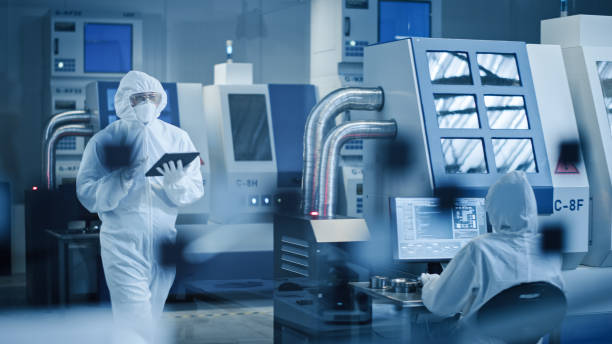In sectors such as aerospace, pharmaceuticals, food processing, and electronics, even the smallest contaminants can compromise safety, compliance, and product quality. Despite appearing spotless, controlled environments often harbor invisible particles that accumulate over time. Preventing these risks begins with recognizing both the origins of contamination and the ways in which particles travel within a facility.
Relying solely on visible cleanliness or air filtration captures only part of the picture. Equipment is frequently a hidden contributor, with components like exposed wiring, aging seals, and untreated metals shedding fine particles during regular use. Day-to-day activity adds to the challenge. Simple actions such as staff movement, carts rolling across floors, or doors opening and closing can disturb settled debris, reintroducing it into circulation.
Shifts in environmental conditions create additional vulnerabilities. Humidity and temperature fluctuations can lead to condensation on ducts and ceilings, carrying contaminants into sensitive zones. Meanwhile, static electricity generated by surfaces, tools, or containers can attract particles—only to release them again when touched.
Airflow design is another critical factor. Even with advanced filtration systems in place, stagnant air pockets may trap contaminants in overlooked areas like corners or beneath equipment. Without specialized assessments such as airflow mapping, these dead zones can remain undetected and become persistent sources of contamination.
Managing these risks requires a proactive, system-wide approach. Monitoring should extend beyond single-point checks to include long-term trend analysis, which helps identify recurring spikes in particle levels linked to specific activities or shifts. Clean facility design also plays a key role. Seamless materials, rounded edges, and sloped surfaces reduce buildup, while modular equipment makes deep cleaning more practical.
Personnel practices must also be prioritized. Proper gowning procedures, low-shedding garments, and regular staff training help reduce human-related contamination. Maintenance protocols are equally important. Routine tasks like filter replacement or lubrication should be aligned with contamination control standards to avoid inadvertently introducing new risks.
Particle contamination is not a static issue. It evolves constantly, shaped by human activity, machinery, and environmental factors. To stay ahead, organizations need proactive tools, smarter facility designs, and well-trained teams that anticipate and mitigate risks.
By embedding these strategies into daily operations, companies can safeguard product integrity, remain compliant, and ensure that the invisible does not undermine their success. For more on this, check out the accompanying resource from Technical Safety Services, a provider of cleanroom certifications.
In highly controlled environments, contamination is often underestimated because many risks remain unseen to the naked eye. While filtration systems and visible cleanliness are essential, they only address part of the problem. Equipment itself can shed particles through aging seals, exposed wiring, or untreated metals, while routine movements—such as doors opening, carts rolling, or staff walking—can disturb settled debris and put it back into circulation. Environmental changes like shifts in humidity or temperature may further introduce condensation, carrying contaminants into sensitive zones, and static electricity can both attract and release particles unexpectedly. Even facility design plays a role, as poor airflow and stagnant zones allow contaminants to accumulate undetected. To truly safeguard operations in industries like aerospace, pharmaceuticals, and food processing, organizations need a holistic approach that blends cleanroom-friendly materials, proactive monitoring with trend analysis, strict maintenance protocols, and rigorous personnel training. By embedding these practices into daily operations, businesses can significantly reduce contamination risks and ensure consistent quality, compliance, and safety across their facilities.




































